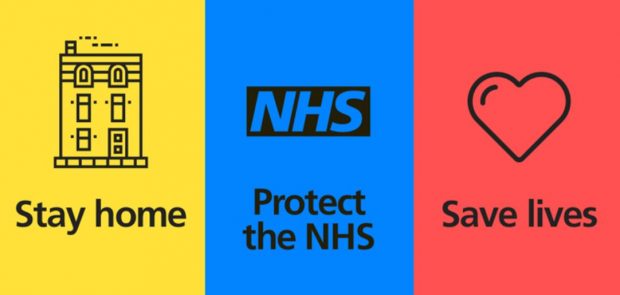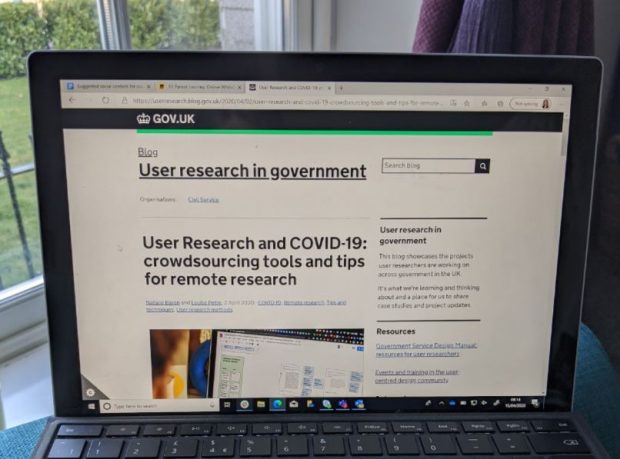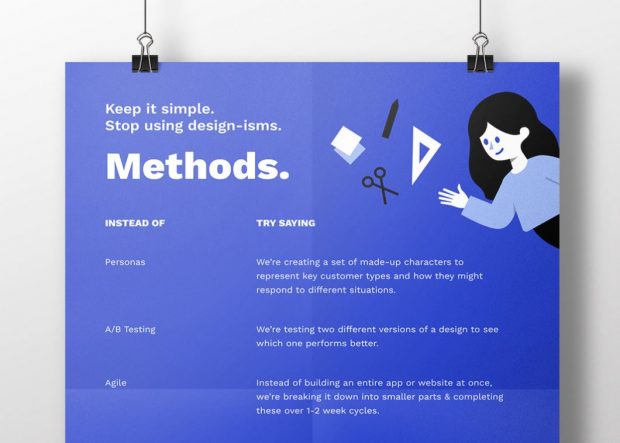
The coronavirus outbreak has brought about a lot of change for most of us in DfE Digital. My team was originally working on a project about education for young children, travelling across the country to speak to nurseries and childminders.
Now, we’re all working from home, with a bigger team and a new project looking at how we can support parents with home learning.
Below, I’ve shared some of the biggest challenges we’ve faced so far, and what we’ve done to overcome them.
Bonding as a new team
When we started our new project, our leadership team thought it best for each delivery team to have 2 people available to cover a role. This was to make sure we could carry on with the project if some of us became unwell.
This means that we have more expertise in the team, and more flexibility around how we work. It also means we’ve suddenly doubled in size, with new members joining us from different parts of the country who we’d never met before.
So how did we cope with this at first? We needed to find a way to get to know each other and understand how we could all work efficiently together. It would have been easy to just crack on with our work, but we were on a fast-paced priority project – teamwork was essential.
We had a meeting where we introduced ourselves, and created ‘manuals for me’. These are documents that explain to our team-mates things like how we like to work, in what environment, and how we prefer to receive feedback. This worked really well and was a great way for everyone to understand each other quickly.
Every day we now have a daily 15 minute coffee break in our diaries, where talk about work is banned. This allows us to get to know each other as you would on breaks in the office, or trips to the kitchen. We also have fortnightly meetings where we look back the previous 2 weeks (these are often called ‘retrospectives or retros’). Retros give us the chance to reflect on our work and explore ways we can work better together.
Moving from face to face interviews to remote ones
One of the best parts of my job is going out on user research visits, meeting people and having a conversation. I personally prefer face to face research to telephone research – for me it’s easier to build a rapport and get a flow going.
We obviously can’t do face to face interviews at the moment, so we’ve had to figure out how to get the essence of a face to face conversation into telephone or online research.
We also needed to make sure we’re sensitive with our interviews – a lot of our users may be going through a difficult time. Where possible, we use video calls instead of phone calls so it feels more like a face to face conversation.
We’ve built in extra parts to our research plan to tackle the situation. We’ve added more time for general chat at the beginning to talk with each user about how they’re feeling and how everything is going.
We’ve shared details about ourselves (who we are, how we are, and where we are working from at the moment) to help the user feel more comfortable. We tell users from the beginning that if they need to pause or end the call to deal with something at home at any time, it’s fine.
Reminding users of their right to withdraw from an interview at any point is important, particularly at the moment when users are experiencing extra pressures.
We’ve also built more time into our research plan so people can figure out the technology and tools. Some people may be new to this.
Doing remote analysis

We normally analyse all of our findings by affinity sorting. This involves taking notes during research on sticky notes, and grouping them as a team to find themes and insights.
We usually do this as a whole team activity, using lots of wall space. This is where having collaborative tools has made a huge difference. We’ve all been using Miro at home. It’s allowed us to create post-it notes and move them around the screen and group them. It’s almost identical to what we’d be doing in the office.
Miro might not be for everyone – it’s important to use tools that feel right for your team. It’s about trial and error. Some teams prefer to use Mural, and use a Google document. All of these options are fine: you should figure out what works best for the team.
We’ve also been keeping our eyes on Twitter. There are so many people across government sharing tips and tricks. Natalie Baron and Louise Petre’s post is an excellent place to start.
This tweet about Josh Munn's posters made me think. We’re working with lots of people who have never worked with digital teams before and don't understand our terminology. These posters have been a great prompt for us to be clearer in our language.
Taking care of ourselves
When working from home, you don’t have the same cues as you do at work that prompt you to take a break, or give a sense of ‘the end of the day’. This can mean working long hours with no breaks (sometimes without realising), and forgetting to make time for your own wellbeing.
DfE Digital has been a great help with this. They have set up a ‘Culture calendar’ with daily activities which allow people to take time out and do things like yoga or Spanish lessons.
A few members of the team are running various world cups, for example biscuit world cup and crisp world cup, to help us have a bit of fun. We also have a ‘virtual pub’ at the end of the working week. We get together and have a cuppa or a drink to celebrate our achievements.
If your team is not already doing things like this, encourage them to all take a short break in the day where you can get together to talk about things other than work – it helps to switch off.
It’s important to be kind to yourself – we’re working in very strange times. I read a great tweet, ‘You are not working from home, you are at home during a crisis trying to work.” It’s important to remember this.
Follow Ella on Twitter.
Subscribe to receive our blog post.

2 comments
Comment by Jude posted on
Great Blog Ella - very helpful.
Comment by Diego posted on
This was a great read, Ella. I had recently come across an interesting platform with pre-built applications to manage your remote work. It lets you customize your App to suit your needs, with absolutely no coding and min. time towards configuration. Do check it out when possible.
https://www.zoho.com/creator/build-remote-workplace/